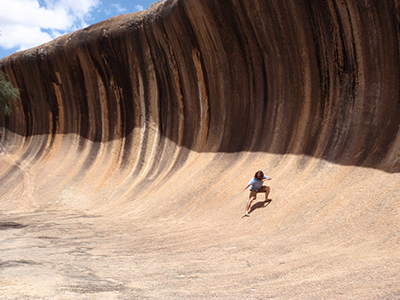

B.Sc. (Honours) Thesis
(PDF - 31Mb)
The Bluestone formation represents the uppermost unit of the Halifax Group in the Halifax area. It is an early Ordovocian turbidite sequence, interpreted to have been deposited on the continental margin of Gondwana. The formation comprises a coarsening-up sequence of interbedded grey-blue slate, silt, and fine sandstone. A characteristic feature is the presence of abundant calcareous concentrations concentrated within sandstone and siltstone layers. In outcrop the concentrations generally form regularly spaced, discrete, oblate bodies form ~5 mm to 1 m across, and from 50 mm to several metres long. They locally form thin, continuous horizons, distinguishable by their distinctive green to buff colour and recessive weathering. Concentric colour banding in some concretions reflects systematic changes from Ca-rich cores to Ca-poor margins adjacent to the host rock. Compositional banding overprints cross-bedding and sedimentary laminations, and the concretions were deformed with their host rocks, indicating that they formed after deposition but before regional deformation, probably during diagenesis.
Samples for this study were collected throughout the Bluestone formation including Point Pleasant Park, Bluestone Quarry and the Williams Lake area. The concretions and their host rocks lie within the contact aureole of the South Mountain Batholith (SMB), with metamorphic grade increasing from east to west toward the intrusive contact. Mineral assemblages vary from calcite + grossular + anorthite + diopside-hedenbergite in low-grade examples, to grossular + vesuvianite + prehnite + quartz in high-grade (proximal) outcrops. The transition between concretion rims and host rocks is marked by radiating sprays of tabular chlorite intergrown with minor biotite. The groundmass in this zone is dominated by detrital quartz with intergranular plagioclase that is Ca-rich in low-grade samples, and Na-rich at high grade. Detrital quartz and feldspar, ubiquitous in distal concretions and their host rocks, are virtually absent in the highest-grade assemblage, proximal to the contact. The presence of vesuvianite indicates Xco2 < 0.11 at peak metamorphic grade near the contact. Retrogression is common in assemblages near the contact, where it is inferred to result from fluid-rock interaction during cooling of the SMB.
Keywords:
Pages: 145
Supervisor: Rebecca Jamieson



